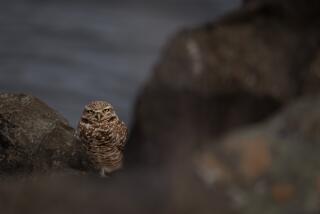How birds lost their penises
Most birds lost their penises somewhere along the trail of evolution. Scientists want to know where they went.
A biological program that triggers cell death is to blame, and it may offer clues about both evolution and the molecular biology behind birth defects, say researchers from the University of Florida, who published their work in Current Biology this week.
“One of the most puzzling events in evolution is the reduction and loss of the phallus in birds,” said Martin Cohn, A University of Florida biologist who studies the evolution of appendages.
“Evolution comes down to reproductive fitness,” he added. “So it’s remarkable that a group of animals would eliminate a structure that’s so important for reproduction.”
While it probably wasn’t any fun to be the first gallus born without a phallus, roosters and their undomesticated brothers have propagated quite successfully since then. Like about 97% of birds (some 10,000 species), male chickens use an opening called a cloaca for the requisite exchange of bodily fluids with the hen.
Birds from a lower position on the evolutionary tree, such as ostriches, emus and the like, have adequate apparatus for what scientists politely call “intromission,” the common way that internal fertilization takes place.
Anseriforms, or modern waterfowl, branched away but kept their protruberant phalluses, some of which are shaped like corkscrews.
But the galliform birds that perch on another branch of the evolutionary tree, such as chickens, quail and turkeys, lost their penises.
While research on animal penises gets a lot of chuckles and a fair share of derision about squandering public funds, scientists who study evolution care about the abandonment of major traits, such as bills, feathers, teeth, scales or tails. And genitalia are fast-growing organs and tend to be affected greatly by birth defects, such as hypospadias.
So the study of animal genitalia reveals something about evolutionary as well as molecular biology during a single lifespan. Understanding the switches that regulate rapid developments can lead to breakthroughs in the study of birth defects and cancer.
Researchers began with the genes known to trigger genital development in mice. They found that patterns of expression of these genes were similar in ducks and chickens, despite their differential endownment.
That led them to suspect that the genetic signal that makes cells proliferate probably was not the source of the difference. A signal inducing cell death during the embryonic stage of a chicken, however, appeared to be the cause.
They tested the patterns of cell generation and death in more “primitive” species, such as the emu. They also looked at the alligator, a nonavian that has been around a long time and also happens to be in abundance near Gainesville, Fla. It also is the UF mascot.
Their findings supported the idea that the genetic signaling that suppressed development of external genitalia was a unique development in galliforms. Finally, they blocked the expression of the cell-death gene in chicks, and were able to inhibit the cell death cycle.
And, no, they did not make chicks grow penises.







